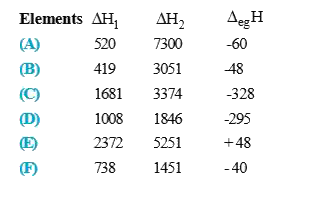Recommended Questions
- The first and second ionization enthalpies and electron gain enthalpy ...
03:08
|
Playing Now - The first (Delta(i)H(1)) and second (Delta(i)H(2)) ionisation enthalpi...
10:56
|
Play - The first and second ionization enthalpies and electron gain enthalpy ...
Text Solution
|
Play - The first and second ionization enthalpies and electron gain enthalpy ...
02:29
|
Play - The first and second ionization enthalpies and electron gain enthalpy ...
02:13
|
Play - The first and second ionization enthalpies and electron gain enthalpy ...
02:39
|
Play - The first and second ionization enthalpies and electron gain enthalpy ...
03:05
|
Play - The first and second ionization enthalpies and electron gain enthalpy ...
03:12
|
Play - The first and second ionization enthalpies and electron gain enthalpy ...
03:08
|
Play
